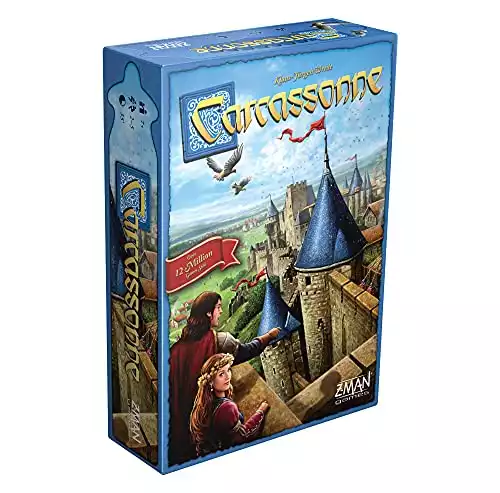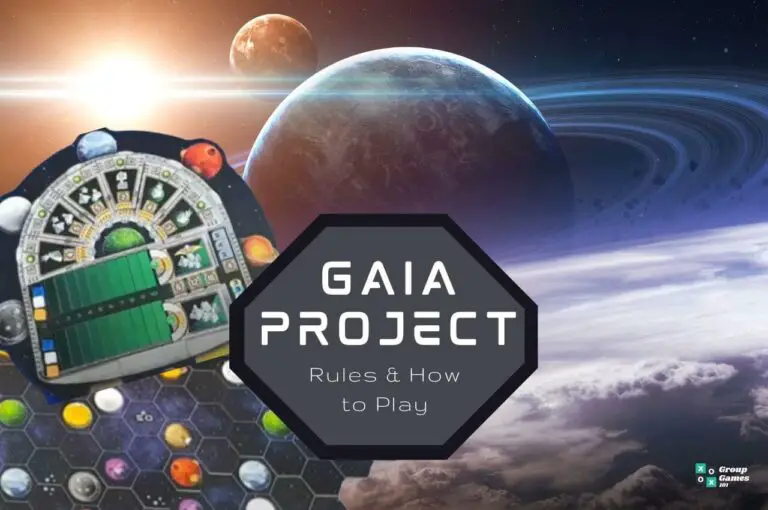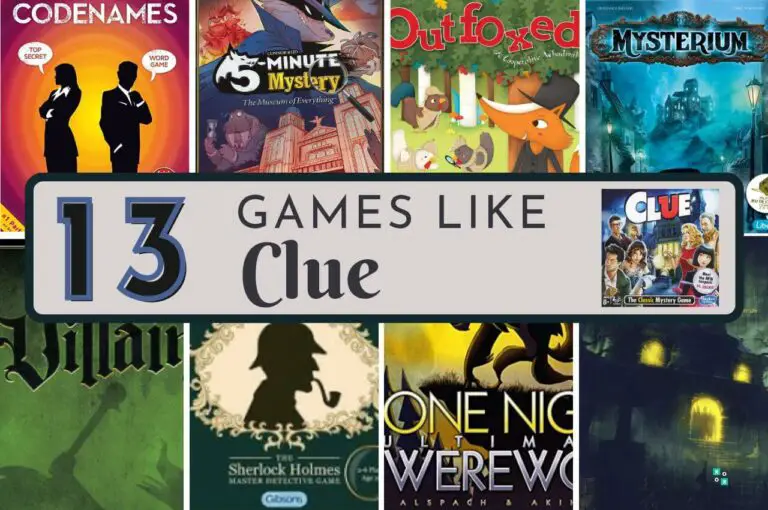Take a step back in time to an age of knights in shining armor, medieval monks, and epic fortified castles with Carcassonne the board game. If you’ve ever wondered how to play Carcassonne, then you’ve come to the right place.
This guide will take you through all the Carcassonne board game rules and instructions on playing this epic board game.
If you’re already familiar with the absolutely jaw-droppingly stunning ancient French town of Carcassonne, then you will be sure to love this board game – and if you aren’t familiar with this remarkable medieval town, then we can be sure that this game will make it onto your bucket list!
This epic tile placement game will have you and your friends transported back in time to try and recreate the rolling hills and unspoiled landscape of the countryside in medieval France to create an expansive and easily accessible route to the mighty city of Carcassonne.
So whether you’ve played it before and are looking for a refresher on the rules, or it’s your first time playing, this guide will help.
Let’s get started!
What is Carcassonne?
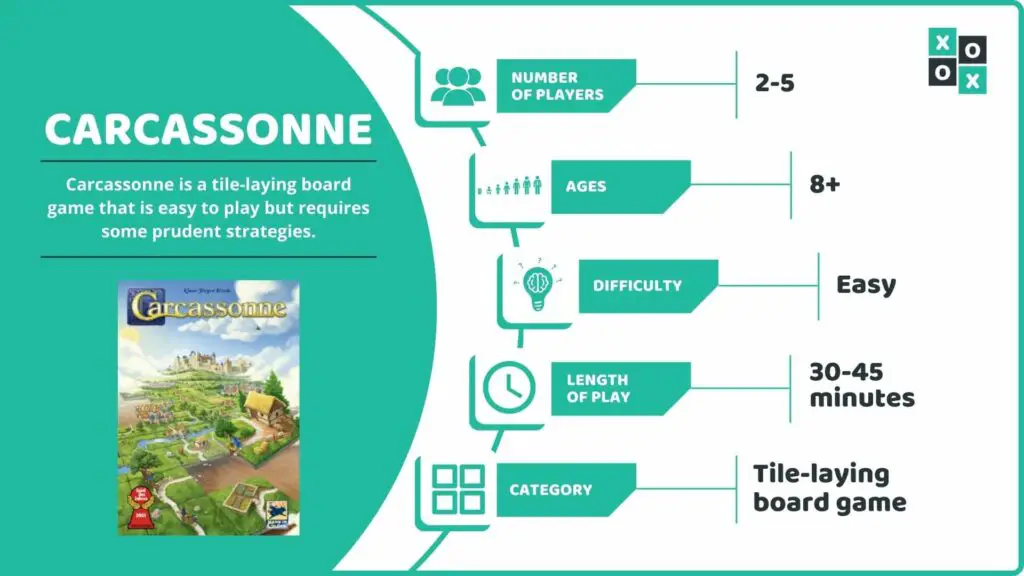
Carcassonne is a tile-laying board game that is easy to play but requires some prudent strategies. The crux of the game is to develop the land around the city of Carcassonne using roads, cities, fields, and monasteries and to be the player who dominates the area around Carcassonne.
It’s often seen as the perfect gateway game to other strategy board games owing to the ease of gameplay and the strategic methods required to dominate the board.
In addition, you can play the original with a whole load of different expansion packs – these include:
- Carcassonne Under the Big Top,
- Carcassonne Inns & Cathedrals,
- Carcassonne The Princess & The Dragon
- Carcassonne Hills & Sheeps.
There are many, many more as well, so you can end up playing any kind of expansion you could possibly think of!
Number of players: Between 2 and 5 players required
Ages: 8+
Difficulty: Easy
Length of play: 30-45 minutes
Similar to: Risk; Greed; Resistance; Castles of Burgundy
Main objective: Build a spread of roads, cities, and monasteries and collect points with your pieces – the player with the most points wins.
Why we love it: Being transported back in time to an age of chivalry and swords is a big win for us here – plus add in a big chunk of strategy, and you’re on to a surefire winner.
Playing Carcassonne – What You’ll Need
If you want to play Carcassonne, all you’ll need is a Carcassonne set and a mind for the medieval! You’ll want to make sure you have plenty of space to play as well because as the game progresses, you’ll end up using more and more tiles and taking up more and more space.
In your Carcassonne board game set, you’ll find the following pieces of kit:
- 72 land tiles (showing cities, roads, fields, and monasteries)
- 40 followers (split between red, black, green, yellow, and blue pieces)
- 1 scoreboard
If you have any of the expansion packs, then you’ll have additional tiles you can use. We’re just going to be looking at the standard, original version of Carcassonne here, however.
Carcassonne Board Game Rules
First of all, you’ll want to set yourself up for gameplay. One of the land tiles will have a slightly darker back. This is the ‘starter’ tile. Place this in the center of the surface you’re using for your game of Carcassonne, with the face-up, and then shuffle the remaining 71 tiles and place them face down across the surface, making sure that all the players have easy access to them.
Each player then chooses a color and takes their followers. These followers can be designated as farmer, thief, knight, and monk. Place the scoreboard on the board game surface, and make sure every player places one follower on the ‘0’ point on the board – keep the remaining 7 for later on. Now you’re ready to play.
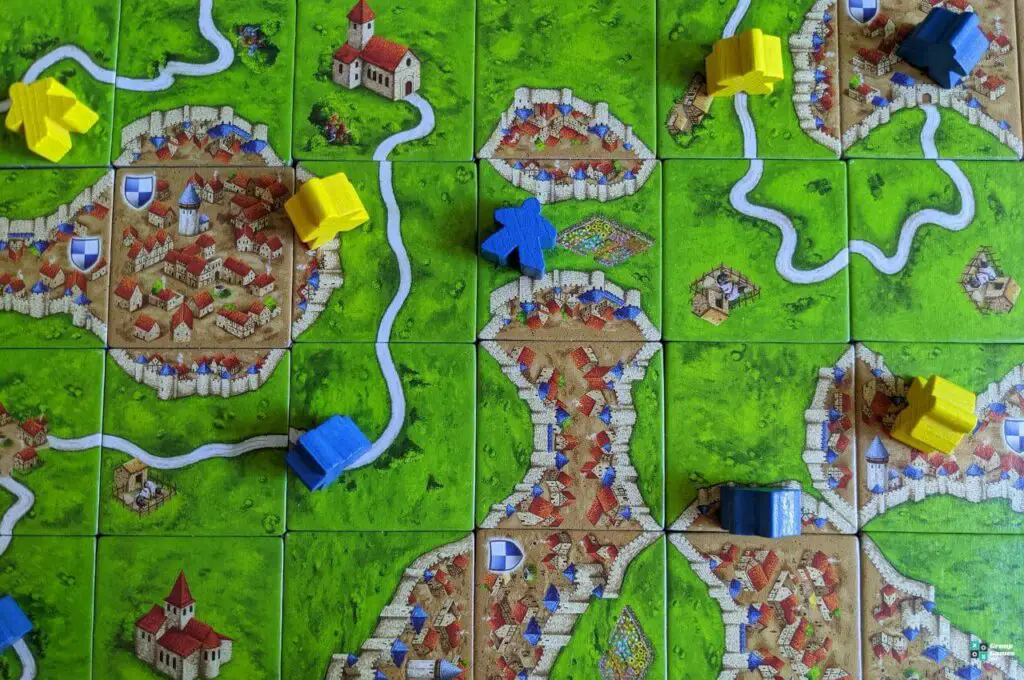
Starting the Game
Decide who goes first. There is then a relatively strict order of proceedings that each player needs to follow, with every player making sure they complete the following actions on their turn:
- Draw a land tile from one of the piles you’ve placed around the play area
- Place the tile down
- Place a follower on this tile
Land Tiles
The tile that the player draws and then places down must be placed so that at least one of its sides touches another side of any previously laid tile. You’ll also see that the tiles have fields, roads, or cities on them.
You have to make sure that the tile continues to the road, or the field, or the city. In the event that the tile can’t continue what has already been laid out on the board, after showing and agreeing with all the other players that it can’t be done, you redraw a tile and try again.
Placing your Followers
Once the player has put down the land tile, they can consider whether they can put down a follower. There are a few rules to when and where you can put down your followers, however. You can only put down one follower, and it has to be from your stash. You can only put it down on the tile that you’ve just put down as well.
You must consider what the tile is when you put your follower down. For instance, if it’s on the road, then your follower becomes a thief. If it’s in a city section, your follower becomes a knight, if it’s in a monastery, they become a monk, and if it’s a field section, they become a farmer.
Rules for Followers
If the section that you want to put your follower in is adjacent to a tile that already has a follower in it, you can’t put your follower down. For instance, if there’s a city section that you’ve completed, but there is already a follower in the other city section tile, you can’t place your follower in your completed city section.
When a player has placed all their followers on the board, they continue putting down land tiles. They can’t retake a follower from a tile, but once a road, a city, or a monastery is completed, the follower is then returned to the player. The player then gets the points from completing this section.
Scoring Points
The aim of the game is to complete as many roads, monasteries, and cities as you can. For every batch of points you get awarded, you move the follower you’ve placed on the scoreboard on however many points you’ve scored.
There are 5 different ways to score points in Carcassonne. They are via:
- Roads
- Monasteries
- Cities
- Fields
- Incomplete Sections
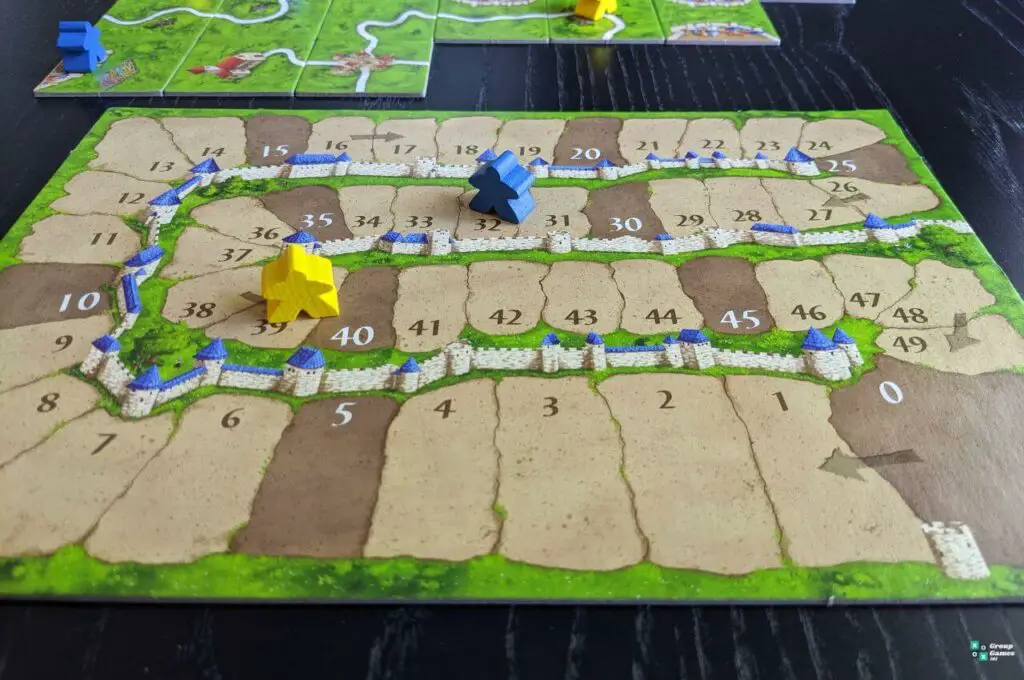
Roads
A road is completed once both ends of the road are connected to a crossroads, a city, or a monastery, or the road loops round onto itself. If the player has put a thief on the completed road, they’ll score 1 point per tile used in the completed road.
Monasteries
A monastery is completed once it is fully surrounded by tiles. If a player has a monk in the monastery, they get 9 points (one point per tile, including the monastery tile itself).
Cities
A city is only completed once it is surrounded by walls. There can be any number of sections in a city as well, as long as it is totally encircled by walls. If a player has a knight in the city, they are awarded 2 points per tile.
Sometimes you can end up with 2 or more followers from 2 different players in the same city or on the same road. In these instances, either the player with the most followers in that section gets the points, or if it’s a tie, the players get the same amount of points.
Fields
Fields are not scored during the game. When the player places a follower down in a field, they place them horizontally to denote that they can’t be moved until the end of the game.
Farmers end up being scored for each completed city that they adjoin. A field is only worth points if it touches at least one complete city. The player with the most farmers adjoining gets 3 points.
Incomplete Sections
When all the tiles have been used up, you end up scoring the incomplete monasteries, cities, and roads as well. Every player with a follower in an incomplete section is awarded 1 point per tile and 1 additional point per follower.
Winning the Game
So once you’ve placed all the tiles and followers, the winner ends up being the person with the most points. The scoreboard is a good way of keeping tabs on how each player is doing as the game progresses, but often the game can take a sudden turn by the end with the adding up of the incomplete sections.
How To Play Carcassonne – Video Tutorial
Frequently Asked Questions
Is Carcassonne good for 2 players?
While it’s lots of fun having the full 5 players in Carcassonne, it can get a bit chaotic, so playing with just 2 players can be a lot of fun and can result in a much longer game.
How long does a game of Carcassonne take?
Most reports state that a standard game of Carcassonne can take between 30-45 minutes. 30 minutes is a good ballpark time if you have 4 or 5 players, but if you’re going head to head with a friend, it can take longer.
Is Carcassonne easy to learn?
From an outsider’s point of view, Carcassonne can look incredibly confusing! However, as you start to play it, you’ll find that it all falls into place. The confusing bits come in when you add up the scores at the end – but you don’t need to worry about that until you get there.
Do you need luck when playing Carcassonne?
There is indeed an element of luck to Carcassonne, as some tiles are ‘better’ (i.e., will score you more points) than others, and some are easier to play at the time – however, strategy is also a large part of it too.
Alternatives to Carcassonne
While Carcassonne is an excellent board game and all the expansion packs can make the game change and develop, it certainly isn’t for everyone, and you may want to consider a slightly different alternative to Carcassonne.
The closest relative to Carcassonne would be the infamous game Catan, which will give you hours of fun, but you could also consider board games like Scythe if you want a good hit of war-based strategy, or Terraforming Mars, which requires similar building and action skills that you get in Carcassonne.
Also, check out our game guides for The Game of Life rules and Ticket to Ride board game rules to play something similar to Carcassonne on your next game night.


